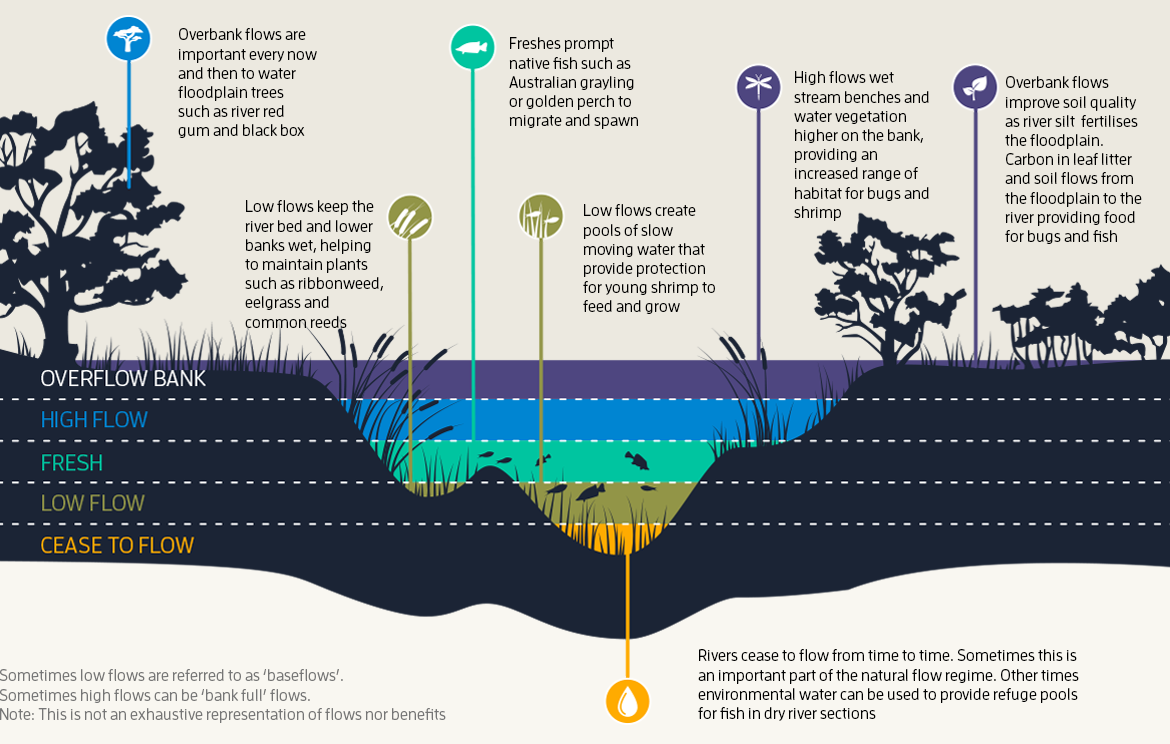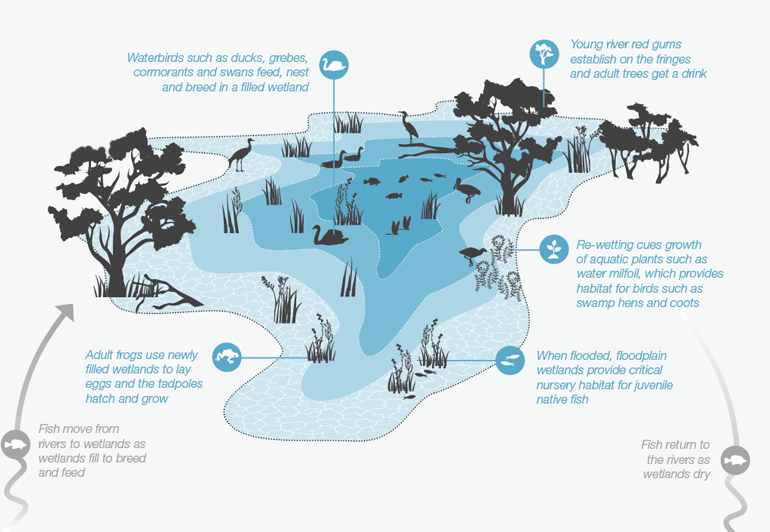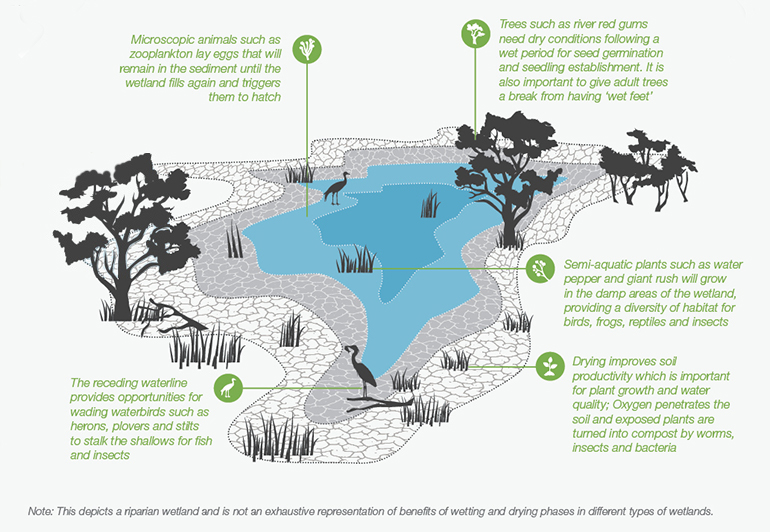Rivers
In rivers, water for the environment is often delivered to mimic some of the flows that would have happened naturally, before dams, weirs and channels.
This is vital for the physical, chemical and biological health of rivers.
Water for the environment managers generally focus on returning some of the small and medium-sized river flows that are critical in the life cycles of native plants and animals. These flows can move sediment and nutrients through rivers, connect habitats and improve water quality.
Releasing the right amount of water into rivers and wetlands at the right time of year, for the right length of time, supports native plants and animals. For example, fish such as the threatened Australian grayling rely on an increase in river flow in autumn to signal them to migrate downstream to breed.
Wetlands
Many wetlands are now disconnected from rivers that used to naturally fill them or are permanently connected to rivers or channels. This means that some wetlands don't get enough water, and others get too much.
Water for the environment managers focus on mimicking more natural wetland wet and dry cycles that plants and animals have evolved to depend on. For example, where wetlands and floodplains have been cut off from rivers, water for the environment can be used to reconnect them via irrigation infrastructure such as pumps, channels and regulators (devices that control water flow).
Water for the environment doesn't try to return rivers and wetlands to their pre-European condition.
Complementary actions
Rivers and wetlands require more than water to be healthy. The type and amount of plants, climate, pest plants and animals, land use and activities by landholders, also influence river and wetland health.
It's also crucial to do works that protect them.
Fencing and revegetation, erosion and pest control, returning logs to rivers for fish and bug habitat, and installing fishways to allow fish to pass through dams and weirs are all important activities that complement environmental watering.


